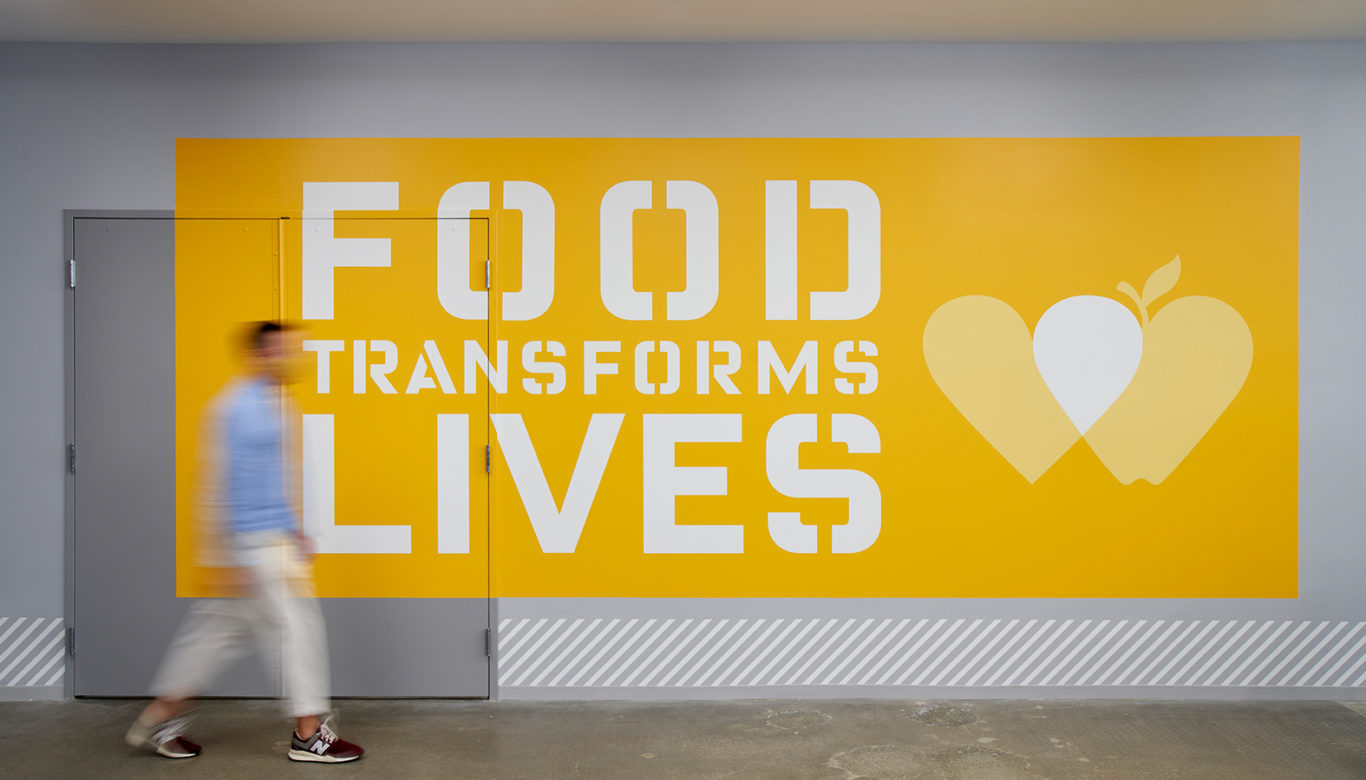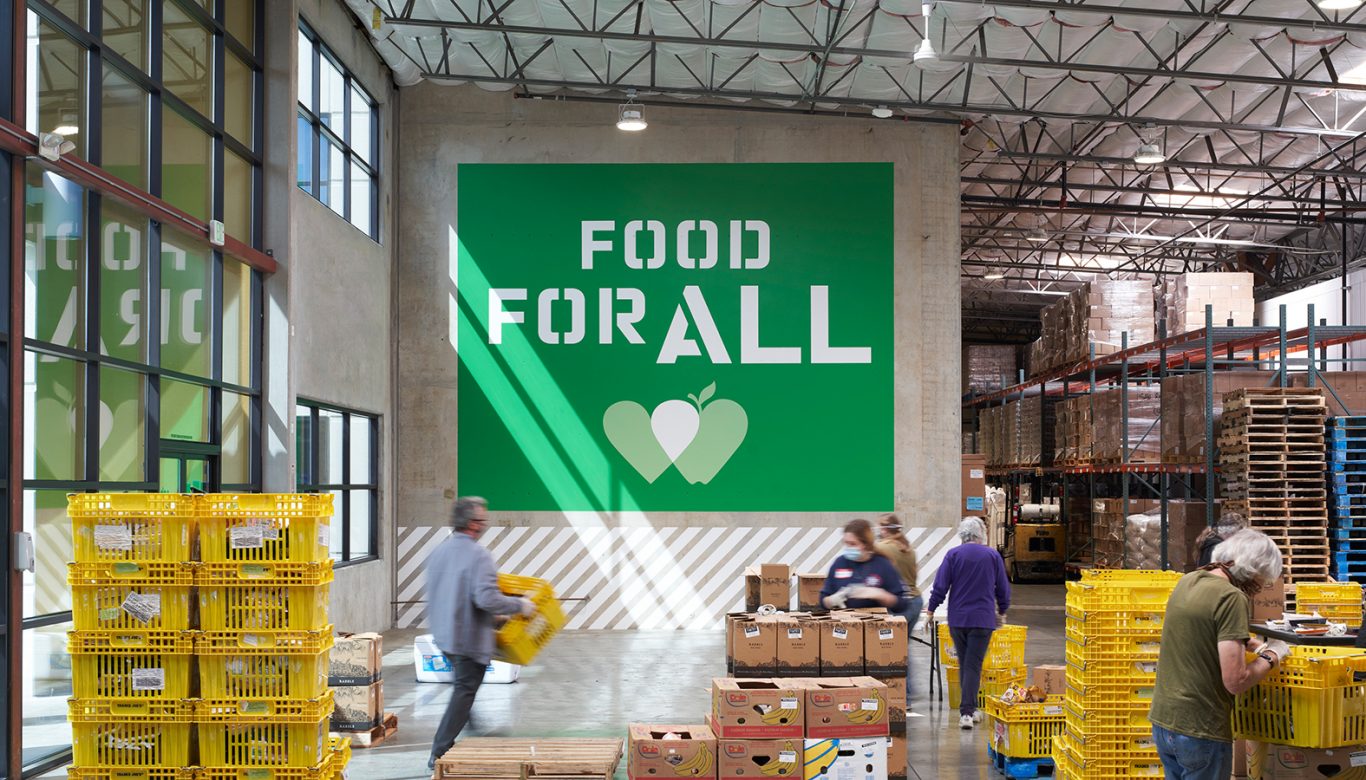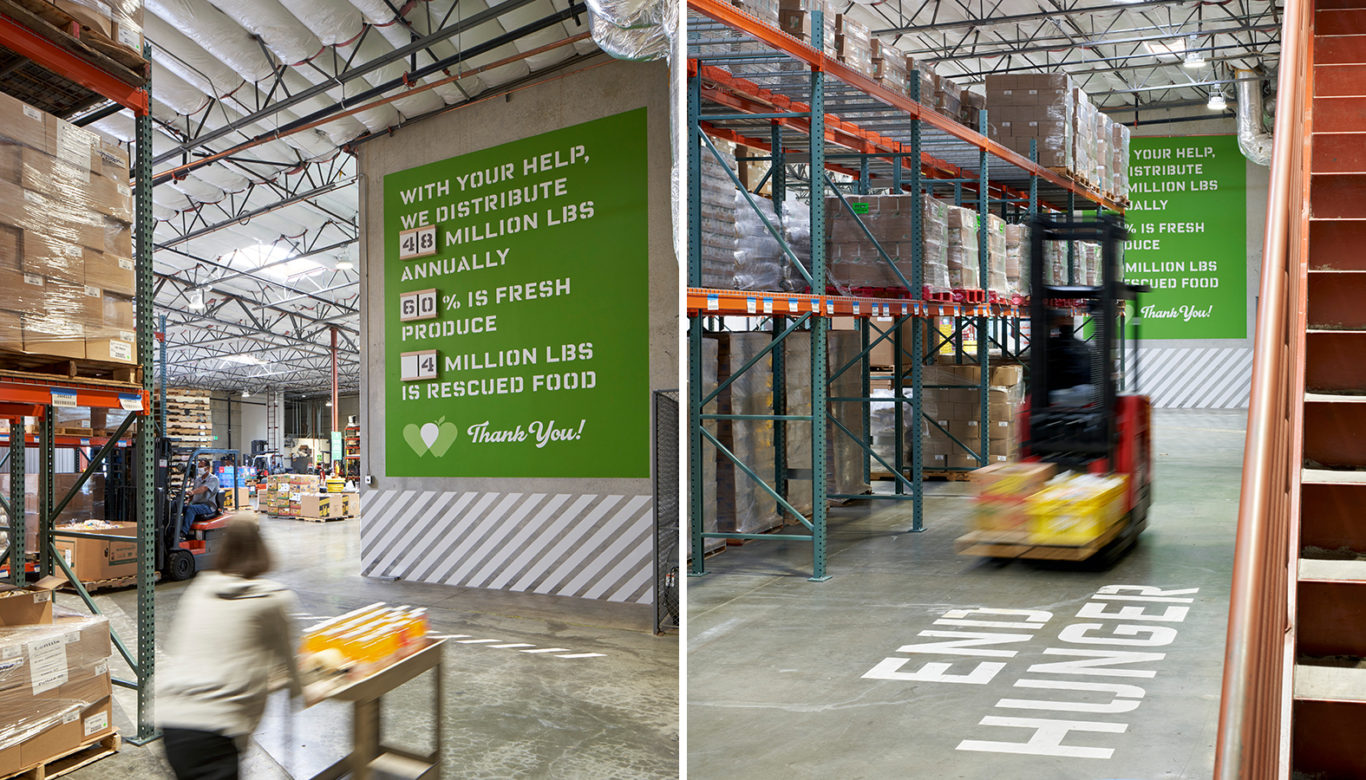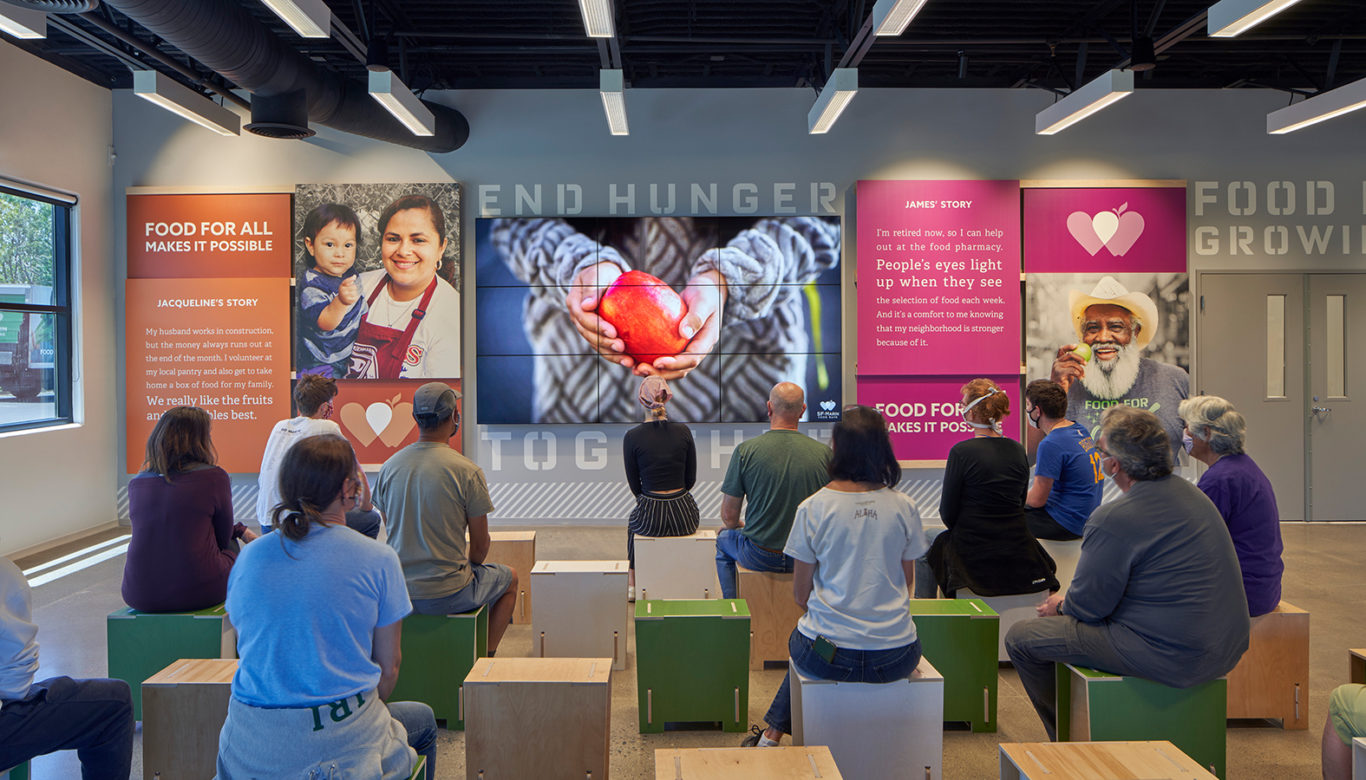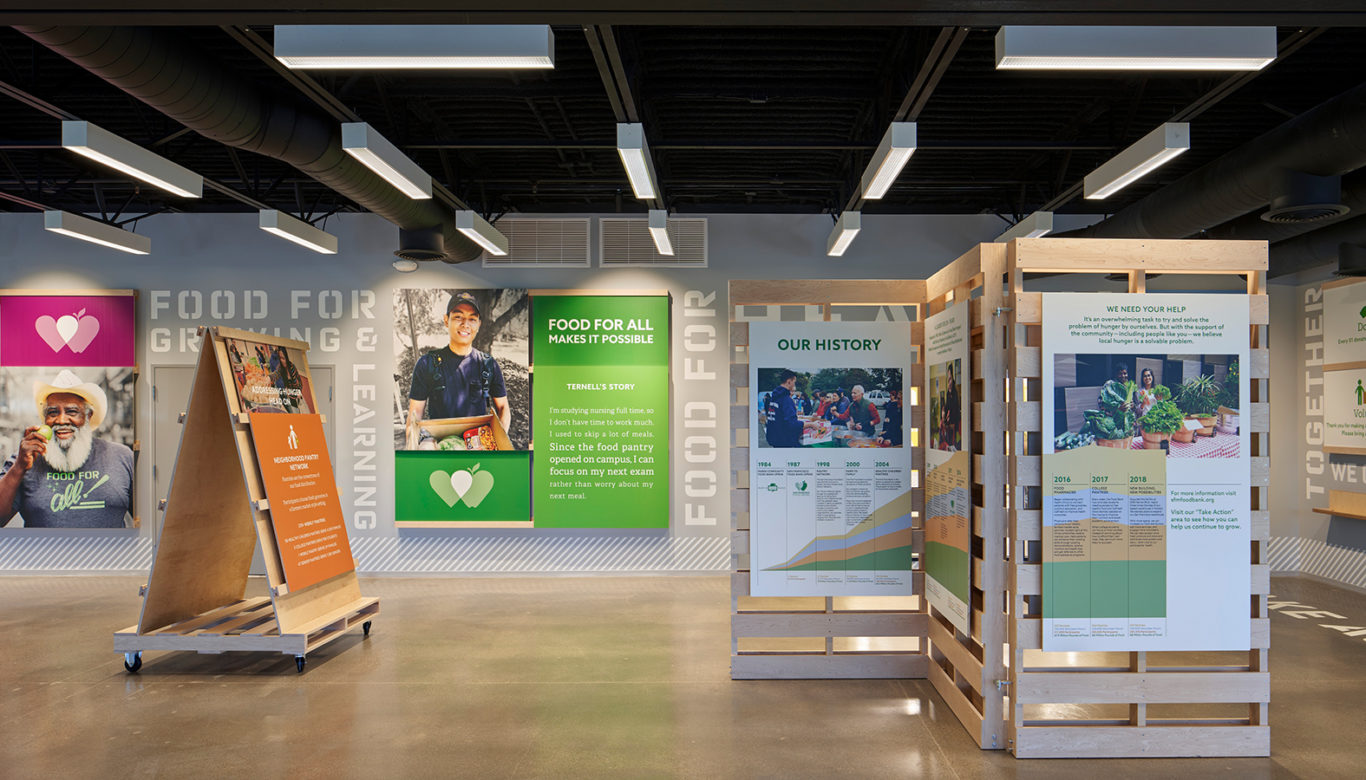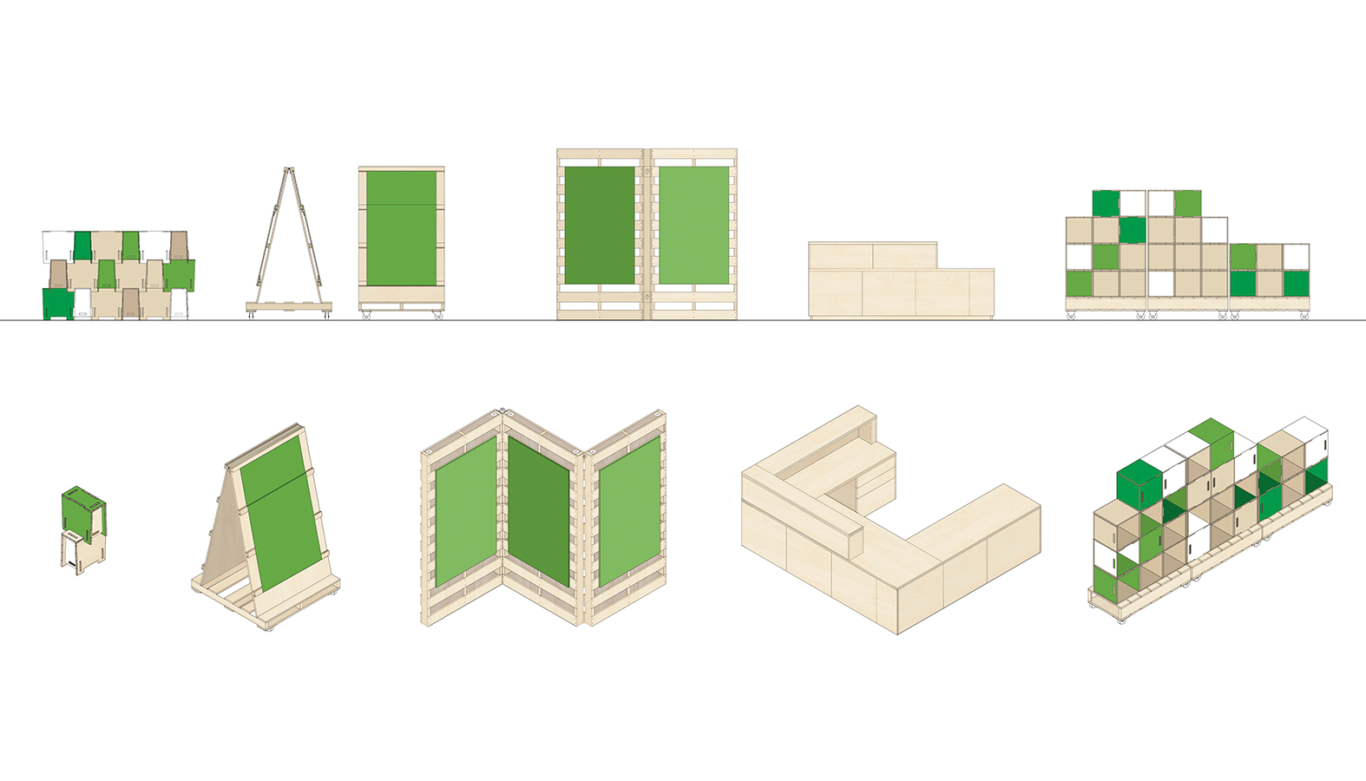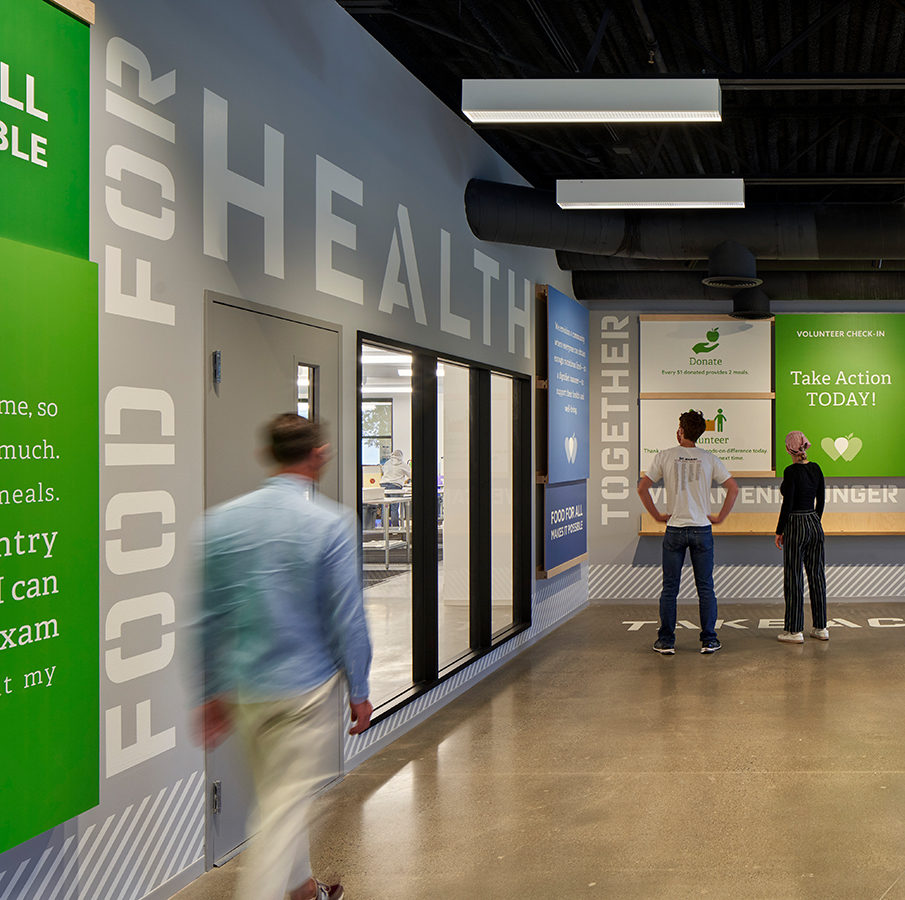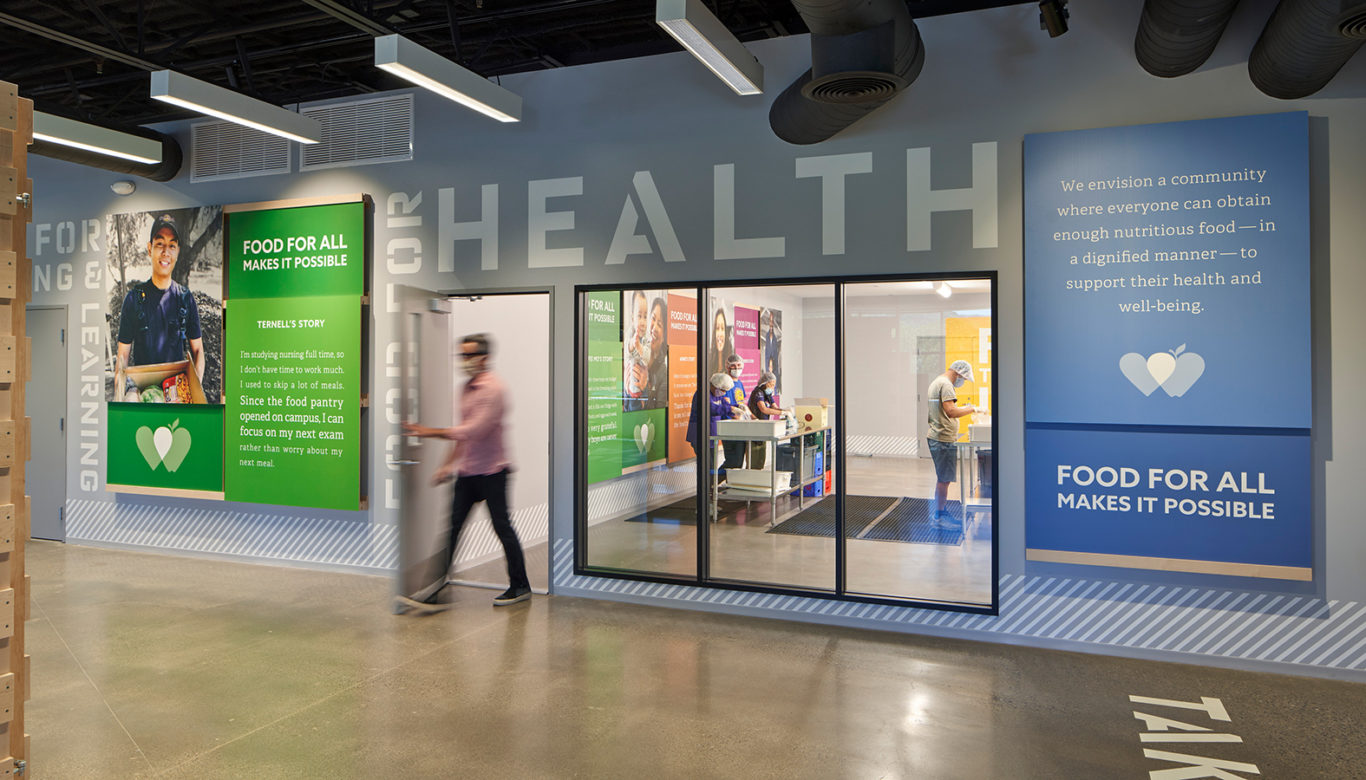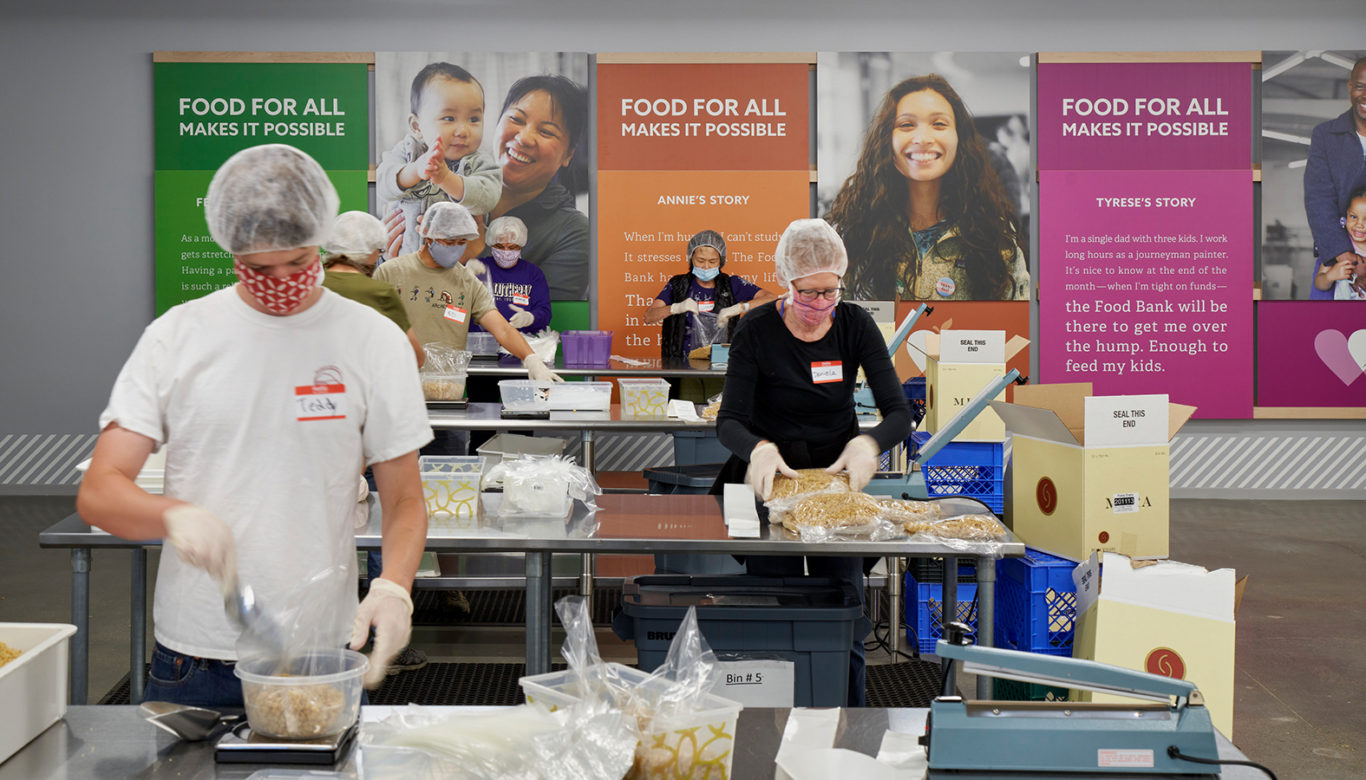To increase the organization’s outreach in Marin, the San Francisco-Marin Food Bank (SFMFB) relocated its North Bay facility to San Rafael in 2020, just as the COVID-19 pandemic began. As the crisis unfolded, SFMFB nearly doubled the number of households served, going from 48 million to 75 million pounds of food distributed annually. The new facility serves as a warehouse, distribution center, and welcome center.
Given its location in a nondescript business park, which restricted SFMFB’s ability to display its identity on the exterior of the building, it was crucial to create a sense of place inside. The interiors are designed to provide a welcoming, humane environment for staff, volunteers, and the individuals they serve. Through the use of large scale graphics and exhibits, hunger is humanized so that visitors understand that anyone can face food insecurity.
The welcome center serves as the main entry for visitors, allowing them to become oriented with the food bank’s mission before their volunteer shift. The space contains exhibits which visually illustrate the organization’s goals and impact in the community. Through testimonials, statistics, a historical timeline, and volunteer recognition, visitors receive a full picture of SFMFB’s contributions to the Bay Area.
A visual vocabulary for SFMFB was established through placemaking graphics, identity signage, exhibits, and furniture. The design utilizes materials and assembly methods commonly found in the warehouse, such as stackable pallets, stenciling, and crates. Custom furniture includes merchandising units and stackable stools, which function as seats or storage and are designed with minimal materials and waste. All freestanding furniture can be easily moved out of the space to allow SFMFB to host events and large gatherings.
